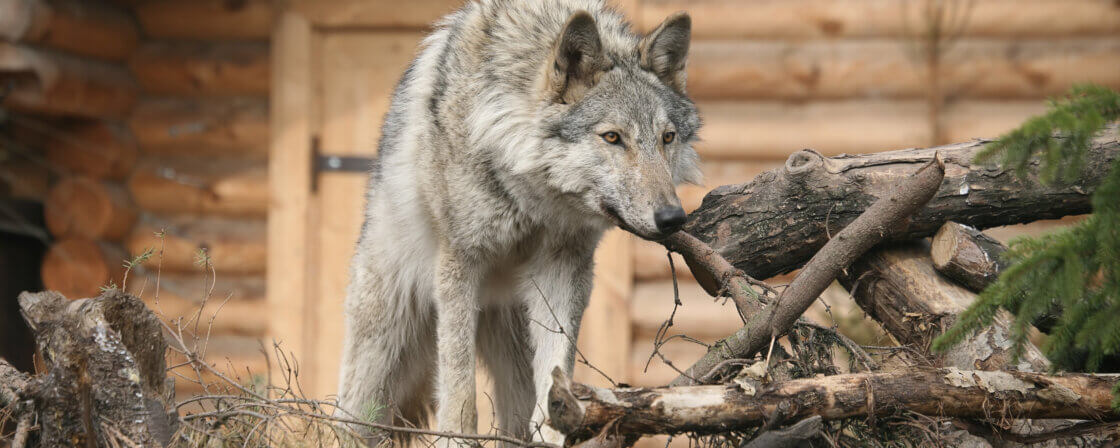When nature intervenes: Why the problem arises in the first place
Specially protected animals are among the rarest parts of Czech nature. They are species that the state protects from extinction and are therefore subject to a strict ban on their deliberate killing, capture or disturbance. The protection of these animals is quite understandable, as they represent valuable links in the ecosystem and are a symbol of nature’s return to balance. However, the problem arises when this protection clashes with human activity. Wolves attack sheep, beavers destroy dams and trees, cormorants take out ponds and otters tear up fishermen’s nets.
For farmers, breeders, fishermen or forest owners, the damage can be very significant. Fortunately, the legal system of the Czech Republic remembers that nature protection must not be unilateral to the detriment of the individual. Therefore, the law stipulates that the state must compensate the injured parties for these damages.
Who are the specially protected animals under the law
The term “specially protected animal” is not just a general term for endangered species. It is a legal category based on the Nature and Landscape Protection Act and the implementing decree. This legislation distinguishes three levels of protection – critically endangered, severely endangered and endangered species. Each species is precisely listed in the annexes to the decree, so that, for example, the river otter, the common wolf, the lynx or the great cormorant are among those for which the state is liable for compensation for damage caused.
A specially protected species is in principle “immune”. It is not allowed to kill, capture, disturb or destroy its habitat. This protection is so strong that, even if the animal causes significant damage, it cannot simply be acted against, for example, by trapping or eradicating it. This is why the legislation has also introduced a system of compensation for damage.
Protection applies exclusively to wild animals, even if they repeatedly cause damage in the vicinity of human settlements. Even then, the legal procedure must be followed. In the event of excessive activity by beavers or wolves, for example, it is possible to apply to the nature conservation authorities for permission to intervene, but even here it is advisable to have legal support, as the boundaries of legal action are very narrow.
Are you solving a similar problem?
Need help with compensation? Leave it to us
If a wolf has torn up your sheep, a beaver has damaged your dam or an otter has destroyed your nets, don’t let the damage go unnoticed. We’ll help you get fair compensation from the government – from the first notification of damage to the payment of compensation. Don’t let bureaucracy decide your money.
More information
- When you order, you know what you will get and how much it will cost.
- We handle everything online or in person at one of our 6 offices.
- We handle 8 out of 10 requests within 2 working days.
- We have specialists for every field of law.
What types of claims are covered and for whom
The key legislation is the Act on the provision of compensation for damage caused by selected specially protected animals. This law provides that the state is obliged to compensate for damage caused by certain selected species of animals – namely the European beaver, river otter, European elk, brown bear, lynx, common wolf, great cormorant, and in recent years some other species according to recent amendments to the decree.
Compensation is granted for damage to:
- to animals (e.g. a wolf kills a sheep or a sheepdog is injured while defending itself),
- fish and fishing gear (otter or cormorant),
- forestry (e.g. beaver undermining a dam, causing waterlogging or cutting down trees),
- on crops and crops, if the damage is proven to be caused by a protected animal.
An eligible claimant may be the owner, lessee or user of the land, farm equipment or livestock that suffered the damage. The law does not limit the claim to business owners only; a private person can also apply if, for example, a beaver destroys their garden or disturbs the bank of their land.
The decisive factor is the ability to prove a causal link between the animal’s activities and the damage caused. If, for example, a wolf has mistaken a pack for feral dogs, the authority examines the evidence – prints, fur remnants, DNA or expert testimony.
How to proceed with a claim for compensation
The law requires the victim to report the damage to the municipality within 48 hours of becoming aware of it. Only then does the authority forward the notification to the regional authority, which decides on compensation. Late reporting may lead to the rejection of the claim.
Step-by-step procedure:
- Document everything immediately. Take photographs, records, call witnesses. If animals are involved, do not remove the bodies until a professional examination has taken place.
- Contact the authorities. Ideally by phone and in writing, stating the location, time and species of the suspected animal.
- Have a report made. An official or expert will conduct a local investigation and write up a report.
- Quantify the damage. Include invoices, accounting documents or an expert’s report.
- Make a claim for compensation – it must be in writing and include all evidence.
The County Council will then assess the claim and decide whether to accept the claim. If the documentation is complete and the evidence is convincing, the regional authority will issue a decision recognising the claim and payment of compensation can be made relatively quickly. Otherwise, the authority may request a supplement.
It is important not to delay – late reporting or insufficient evidence are the most common reasons for claim rejection.
Tip for article
Tip: Dog insurance is a topic that more and more owners are considering. Veterinary care today is high level but also very expensive, and the damage a dog can cause to strangers or their property can run into hundreds of thousands of crowns. Counter this with the right dog insurance.
What to do if the authorities refuse compensation
Not every claim for compensation ends successfully. The authorities often argue that the victim has not sufficiently proved causation, failed to meet a deadline or that another species of animal caused the damage. If you disagree with the decision, you have the option to appeal – usually within 15 days of receiving the decision.
The appeals body will review the authority’s action and may change or overturn the decision. If you are unsuccessful here, there is still the option of an administrative appeal to the courts. However, at this stage it is already worth having legal representation, as the procedure is governed by the Administrative Procedure Code and the standard of proof is stricter.
Our compensation lawyer can help you not only with the appeal, but also with the preparation of evidence – for example, requesting an expert report on the origin of the attack or proving that you have complied with all legal obligations. This is because sometimes it happens that the authorities overlook a key detail (such as a photographic trap record or biological analysis). If the authorities have erred, you can also claim compensation for damages caused by maladministration. In practice, a lawyer can thus open up another legal avenue. It is therefore important not to give up just because the first application has failed, often this is just a formal error which can be easily rectified.
How to prevent damage and how to be prepared
While the law guarantees compensation, the state expects the victim to do their best to prevent it. So, for example, if you leave sheep loose without fencing in an area with wolves, the authorities may consider this to be negligence and reduce or refuse compensation.
Prevention is therefore the key:
- secure the holdings with electric fences or solid fences,
- the use of herding dogs or night-time closures,
- install nets or scarecrows at ponds,
- for beaver sites, consult the MPA administration on the possibility of technical measures.
The Agency for Nature and Landscape Conservation often provides advice and subsidies for preventive measures. It is worth informing them in advance, before any damage occurs.
It is important to keep regular records – when and how the animals were secured, what measures you have taken. These records can later serve as proof that you have fulfilled your duty to prevent damage.
Tip for article
Tip: Do you own land? Then you will not be obliged to pay property tax. Although it may seem like an unpleasant formality, knowing the calculation, rates, coefficients and exemptions can make your life much easier. The information in our article will help you.
Conclusion: balance between nature and justice
Protecting nature and the rights of injured people need not be mutually exclusive. The law on compensation for damage caused by specially protected animals is proof that the state is striving for a fair balance – to protect nature but not to let individuals down.
If you have suffered damage, don’t let it go unnoticed. Meet deadlines, document carefully, and exercise your right to seek compensation. And if you’re unsure of the process, contact an Accessible Lawyer – Legal Aid is here to help ease your path to compensation.
Summary
Particularly protected animals such as beavers, otters, wolves, bears, cormorants and lynx are gradually returning to the Czech countryside – and with them, the damage they can cause to people, fishermen, farmers and breeders. If such animals damage property or livestock, the state has an obligation to compensate for this damage. Compensation is available for damage to domestic animals, fish, crops or forestry and can be claimed by businesses and ordinary citizens. The condition is that the damage is reported to the municipality within 48 hours of the victim’s discovery of the damage and the subsequent submission of a claim with evidence – photographic documentation, expert opinion or inspection report. The regional authority then decides whether to accept the claim. If it rejects the claim, an appeal can be lodged or a court case can be brought. In making its decision, the authority also takes into account whether the victim has taken reasonable precautions. If not, compensation may be reduced.
Frequently Asked Questions
Who will pay me for the damage caused by a specially protected animal?
Compensation for damages is provided by the state, specifically through the relevant regional authority or the Ministry of the Environment. The amount of compensation shall be determined according to the documented costs and the value of the property destroyed. For example, if a wolf tears up a sheep or a beaver damages a dam, the state is obliged to compensate you for this damage – provided, of course, that the damage has been properly reported and proven.
How long do I have to report the damage?
Damage must be reported within 48 hours of discovery. The report is made to the municipality with extended jurisdiction (Department of Environment), which forwards it to the regional authority. If the deadline is not met, the authority may refuse the request, even if it is otherwise justified. It is advisable to document the damage (photographs, witnesses, GPS location) and have the notification acknowledged.
What evidence do I need to attach to my claim for compensation?
The basis for this is a site inspection report, which is drawn up by a representative of the authority or a specialist. In addition, attach photo documentation, invoices, receipts, an expert’s report or a veterinarian’s certificate. The aim is to prove not only the amount of damage but also that it was caused by a specific protected animal. If possible, it is also advisable to provide evidence of preventive measures (e.g. fencing or breeding security).
What if the authorities reject my application?
In the event of a refusal, you can appeal within 15 days of receiving the decision. The appeal is directed to the Ministry of the Environment, which will review the case again. If you are unsuccessful there, you can take an administrative action to court. At this stage, it is usually worthwhile to contact a lawyer to help with the arguments and evidence. An available lawyer can also provide you with an expert opinion or a review of the official procedure.
Am I entitled to compensation even if I have not taken any preventive measures?
Yes, but only if it was objectively impossible to prevent the damage. The law presumes that the victim takes reasonable measures to protect his or her property. For example, if you leave sheep loose on pasture in a wolf-infested area without fencing or guarding, the authorities may consider this negligence and reduce the compensation. Conversely, if you demonstrably secure the breeding, you significantly increase your chances of being fully compensated.




